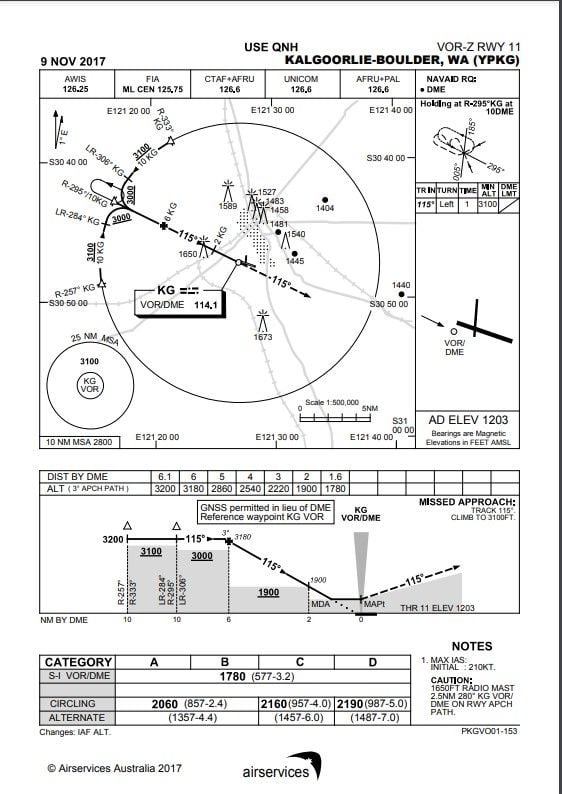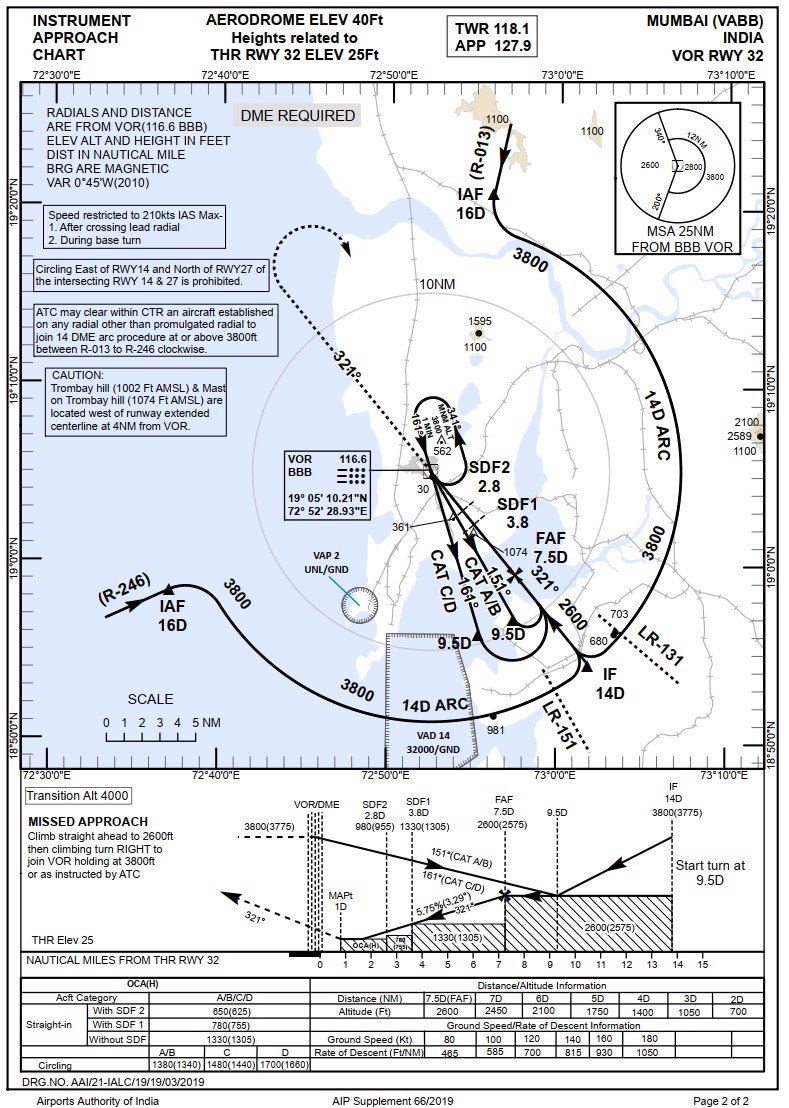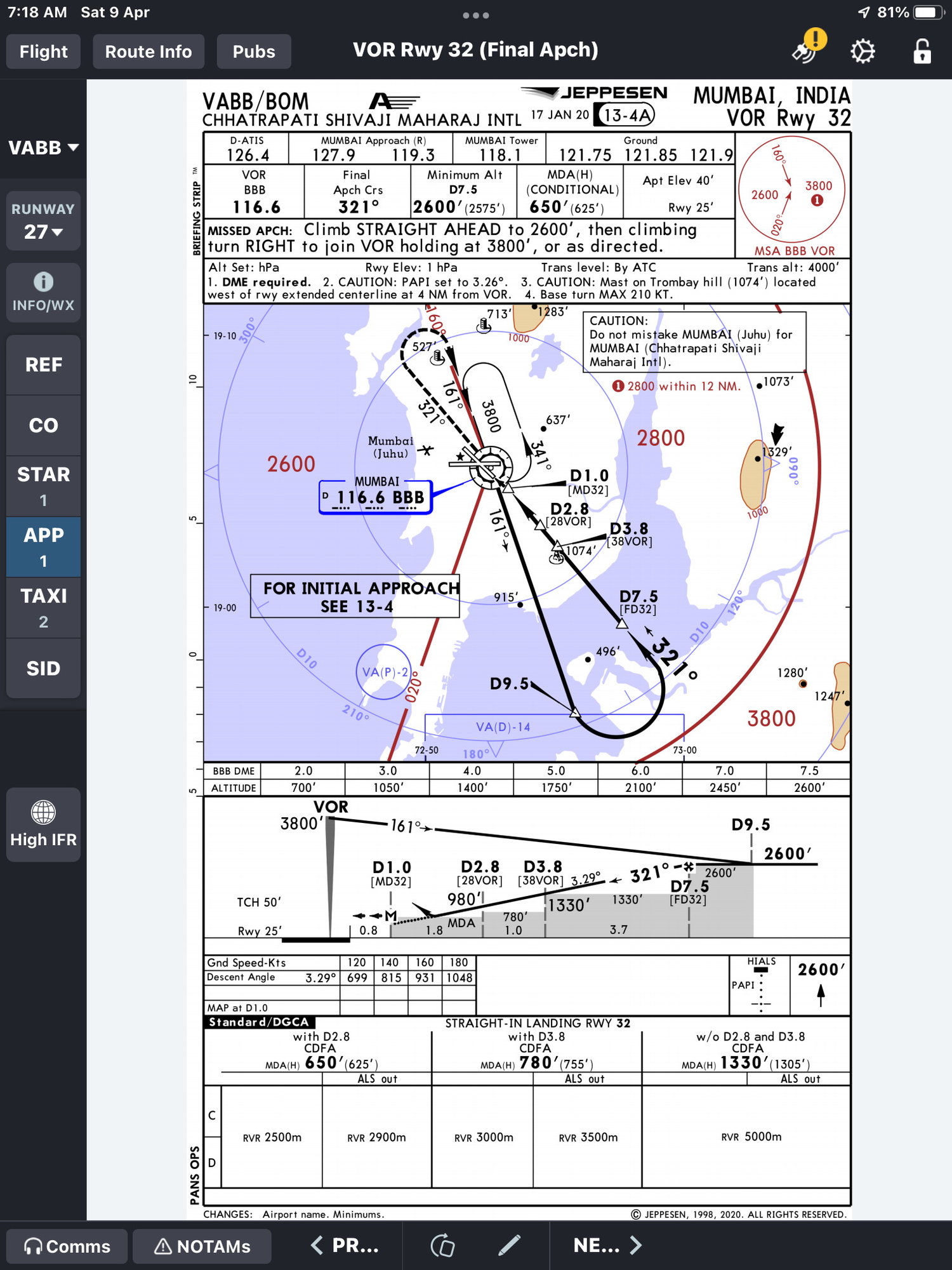VOR DME Approach
Join Date: Jan 2006
Location: Between a rock and a hard place
Posts: 1,267
Likes: 0
Received 0 Likes
on
0 Posts
Sorry Capt. and 172
The aim wasn't to make a simple VOR/DME approach complicated; however, I looked at the approach plate and was confused, it sounds like Boyington was confused, that is why he asked the question. We have now discussed and pondered the intention of the plate for a day or so. We may have come to a conclusion, it may be correct or it may be incorrect!
The question is, how long would a pilot have to brief on the plate having just diverted towards that airfield for the first time in their career, if that MDA(H) table was unnecessarily complicated would deciphering it have interfered with more important tasks?
Cheers
TeeS
The aim wasn't to make a simple VOR/DME approach complicated; however, I looked at the approach plate and was confused, it sounds like Boyington was confused, that is why he asked the question. We have now discussed and pondered the intention of the plate for a day or so. We may have come to a conclusion, it may be correct or it may be incorrect!
The question is, how long would a pilot have to brief on the plate having just diverted towards that airfield for the first time in their career, if that MDA(H) table was unnecessarily complicated would deciphering it have interfered with more important tasks?
Cheers
TeeS
Last edited by TeeS; 10th Apr 2022 at 21:48.
Join Date: Nov 2005
Location: Zulu Time Zone
Posts: 730
Likes: 0
Received 0 Likes
on
0 Posts
2.7.3.2...Where a stepdown fix is used in the final approach segment, an OCA/H shall be specified both with and without the stepdown fix...
That is the definitive answer to the question posed in post #1. PANSOPS says it, therefore it is.
The thread hasn't answered that question.
An example in my area; a similar approach with a limiting step in the FAS. No separate OCA/MDA.

Perhaps, that Indian chart means "if you comply-with/miss/clear SDF1, you can use 780, and if you comply-with/miss/clear SDF2, you can use 650."?
I can't find anything in the Indian AIP nor a 2014 copy of Pansops to explain the use of the different MDAs.
To me this looks like database coding determines which minima is used:
1. If the coding is FD32 > MD32 then MDA is 1330 ft
2. If the coding is FD32 > 38VOR > MD32 then MDA is 780 ft
3. If the coding is FD32 > 28VOR > MD32 then MDA is 650 ft
1. If the coding is FD32 > MD32 then MDA is 1330 ft
2. If the coding is FD32 > 38VOR > MD32 then MDA is 780 ft
3. If the coding is FD32 > 28VOR > MD32 then MDA is 650 ft
3. STATUS
Procedures for Air Navigation Services (PANS) do not have the same status as Standards and Recommended Practices.
While the latter are adopted by Council in pursuance of Article 37 of the Convention and are subject to the full
procedure of Article 90, PANS are approved by Council and are recommended to Contracting States for worldwide
application.
I don't believe it does. That's just a statement of fact. I'm sure the OP (and me too), is interested in not only the "why" but the operational implications of the multiple MDAs. How do I use that chart in the cockpit to do my approach, what minima is actually applicable to me and what special requirements, over and above the normal NPA procedures of not busting any steps, are applicable, if any?
From initial inspection, I can’t see why if you respect the crossing altitudes, be it by traditional or electronic means, you can’t use the lowest minima. The approach is depicted in a very similar way in Lido. It reminds me of when you sometimes have VNAV and LNAV/VNAV minima that are different: if you can use both, you can pick the lowest, which could be either of them due to various technicalities in the way they are calculated.
The “how” is just as important, if not more so, than the “why”...
Non-CDFA minima 1330 ft applies (w/o D2.8 & D3.8 CDFA).

Join Date: Jan 2006
Location: Between a rock and a hard place
Posts: 1,267
Likes: 0
Received 0 Likes
on
0 Posts
Sorry Capt. and 172
The aim wasn't to make a simple VOR/DME approach complicated; however, I looked at the approach plate and was confused,
The aim wasn't to make a simple VOR/DME approach complicated; however, I looked at the approach plate and was confused,
Brief and use MDA 650. Stranger to me is that it's mentioned as VOR-appr. (and not VOR/DME).
If you use the published MDA as a DA then you will have exceeded your minima. PANS-OPS again:
1.8.2.3 If the visual references required to land have not been acquired when the aircraft is approaching the MDA/H, the vertical (climbing) portion of the missed approach shall be initiated at an altitude above the minimum descent altitude/height (MDA/H) sufficient to prevent the aircraft from descending through the MDA/H. At no time is the aircraft to be flown in level flight at or near the MDA/H. Any turns on the missed approach shall not begin until the aircraft reaches the missed approach point (MAPt). Likewise, if the aircraft reaches the MAPt before descending to near the MDA/H, the missed approach shall be initiated at the MAPt.
1.8.2.4 An increment for the MDA/H may be prescribed by the operator to determine the altitude/height at which the vertical portion of the missed approach shall be initiated in order to prevent descent below the MDA/H. In such cases, there is no need to increase the RVR or visibility requirements for the approach. The RVR and/or visibility published for the original MDA/H should be used.
Cheers
TeeS
Originally Posted by 172
Stranger to me is that it's mentioned as VOR-appr. (and not VOR/DME).
9.5.2 Procedure chart identification
9.5.2.1 General. The chart identification for procedures requiring ground-based navaids shall only contain the
name describing the type of radio navigation aid providing the final approach lateral guidance. Precision approach
systems such as ILS or MLS shall be identified by the system name (ILS, MLS, etc.). If two radio navigation aids are
used for final approach lateral guidance, the chart identification shall only include the last radio navigation aid used.
For example:
if an NDB is used as the final approach fix and a VOR is used as the last navaid on the final approach to runway 06,
the procedure shall be identified as VOR Rwy 06. If a VOR is used for the initial approach followed by a final
approach to Rwy 24 using an NDB, the procedure shall be identified as NDB Rwy 24.
Note.— For chart identification of procedures supporting PBN, refer to Part III, Section 5, Chapter 1.
9.5.2.2 If additional navigation aids or equipment are required for the approach procedure, associated additional
equipment requirements shall be specified on the plan view of the chart, but not in the the chart identification.
9.5.2.2.1 The equipment requirements mentioned on the plan view refer only to the equipment on board the
aircraft necessary to conduct the procedure in normal mode (i.e. not for backup). For example:
“ADF required ” on a VOR approach.
“Dual ADF required”, on an NDB approach where two ADFs are required to fly the final approach segment.
“DME required” on a VOR approach.
9.5.2.2.2 Equipment that is required in the corresponding airspace may be mentioned as equipment requirements.
Cheers
TeeS
Join Date: Feb 2002
Location: US
Posts: 108
Likes: 0
Received 0 Likes
on
0 Posts
I am not familiar with the potential differences between PANS-OPS and DGCAA. The plate, however, has the PANS-OPS logo printed in the left margin, suggesting that the plate would comply with PANS-OPS regs. I am not sure, but would these minima not refer to failure of DME cases? IAW if your DME fails after you have commenced your final approach (indicated by the Maltese cross) you can go down to 1330', because obstacle clearance is guaranteed to that altitude. If your DME fails after you have passed 3.8 DME you can continue to 780', because obstacle clearance is guaranteed to that altitude. IF your DME fails after 2.8 DME you can continue to 650', because obstacle clearance is guaranteed to that altitude?
I am not familiar with the potential differences between PANS-OPS and DGCAA. The plate, however, has the PANS-OPS logo printed in the left margin, suggesting that the plate would comply with PANS-OPS regs. I am not sure, but would these minima not refer to failure of DME cases? IAW if your DME fails after you have commenced your final approach (indicated by the Maltese cross) you can go down to 1330', because obstacle clearance is guaranteed to that altitude. If your DME fails after you have passed 3.8 DME you can continue to 780', because obstacle clearance is guaranteed to that altitude. IF your DME fails after 2.8 DME you can continue to 650', because obstacle clearance is guaranteed to that altitude?
That was one of my early thoughts about it but I think there are three problems with looking at it that way:
1. It produces one of the most complex approach briefs ever.
2. Can you continue the approach that requires DME once the DME fails, Note 1 in bold?
3. If you do continue, where is your missed approach point?
Cheers
TeeS
Hi FullWings
If you use the published MDA as a DA then you will have exceeded your minima. PANS-OPS again:
1.8.2.3 If the visual references required to land have not been acquired when the aircraft is approaching the MDA/H, the vertical (climbing) portion of the missed approach shall be initiated at an altitude above the minimum descent altitude/height (MDA/H) sufficient to prevent the aircraft from descending through the MDA/H. At no time is the aircraft to be flown in level flight at or near the MDA/H. Any turns on the missed approach shall not begin until the aircraft reaches the missed approach point (MAPt). Likewise, if the aircraft reaches the MAPt before descending to near the MDA/H, the missed approach shall be initiated at the MAPt.
1.8.2.4 An increment for the MDA/H may be prescribed by the operator to determine the altitude/height at which the vertical portion of the missed approach shall be initiated in order to prevent descent below the MDA/H. In such cases, there is no need to increase the RVR or visibility requirements for the approach. The RVR and/or visibility published for the original MDA/H should be used.
Cheers
TeeS
If you use the published MDA as a DA then you will have exceeded your minima. PANS-OPS again:
1.8.2.3 If the visual references required to land have not been acquired when the aircraft is approaching the MDA/H, the vertical (climbing) portion of the missed approach shall be initiated at an altitude above the minimum descent altitude/height (MDA/H) sufficient to prevent the aircraft from descending through the MDA/H. At no time is the aircraft to be flown in level flight at or near the MDA/H. Any turns on the missed approach shall not begin until the aircraft reaches the missed approach point (MAPt). Likewise, if the aircraft reaches the MAPt before descending to near the MDA/H, the missed approach shall be initiated at the MAPt.
1.8.2.4 An increment for the MDA/H may be prescribed by the operator to determine the altitude/height at which the vertical portion of the missed approach shall be initiated in order to prevent descent below the MDA/H. In such cases, there is no need to increase the RVR or visibility requirements for the approach. The RVR and/or visibility published for the original MDA/H should be used.
Cheers
TeeS




